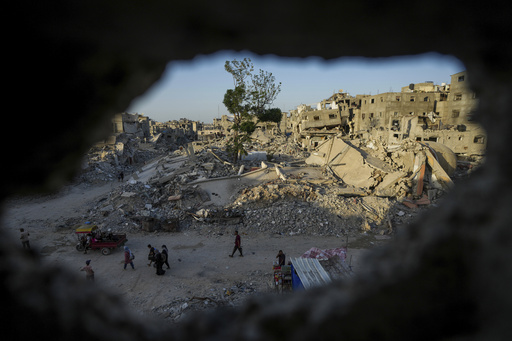Israel’s extensive military campaign in Gaza over the past year, initiated in response to an attack by Hamas on October 7, has resulted in significant casualties and widespread devastation within the region. The numbers provided by various sources including the Israeli government, the Gaza Health Ministry, and U.N. agencies illustrate the magnitude of the death toll and destruction that has occurred.
The initial attack on October 7 led to the deaths of around 1,200 individuals in Israel, with 251 people being taken hostage into Gaza. Currently, there are 66 hostages alive in Gaza, including 2 who were taken before the October 7 attack. Tragically, 35 of the captives in Gaza are believed to have perished, including 2 from before October 7.
Throughout the Israel-Hamas conflict, over 41,000 Palestinians have lost their lives in Gaza, with more than 96,000 sustaining injuries. The Israeli military claims to have eliminated over 17,000 militants during this period. Conversely, the number of Israeli soldiers who have lost their lives since October 7 has exceeded 720. Furthermore, Gaza militants have launched over 9,500 rockets towards Israel during this period.
The impact on the civilian population has been profound, with approximately 1.9 million Palestinians being displaced in Gaza, accounting for around 90% of the territory’s population. At the peak of attacks from Gaza, over 58,000 Israelis were displaced, with around 5,300 currently displaced from the south of Israel. Nearly 90% of Gaza’s territory has been placed under evacuation orders by Israeli authorities.
The destruction wrought by the conflict is staggering, with over 120,000 structures suffering from moderate to severe damage, including over 215,000 housing units. Approximately 66% of structures in Gaza have been damaged or destroyed, amounting to an estimated cost of $18.5 billion in damages during the first three months of the war. Comparatively, the West Bank and Gaza recorded their highest GDP ever in 2022 at $19.17 billion.
The war has also taken a toll on Gaza’s infrastructure, with over 92% of primary roads, more than 84% of health facilities, and 67% of water and sanitation facilities being damaged or destroyed. The daily discharge of untreated water and sewage into the sea from Gaza has reached 60,000 cubic meters, underscoring the dire humanitarian and environmental consequences of the conflict. Additionally, approximately 510 kilometers (320 miles) of the electrical grid in Gaza have been ravaged by the conflict, further exacerbating the challenges faced by the population in the region.


